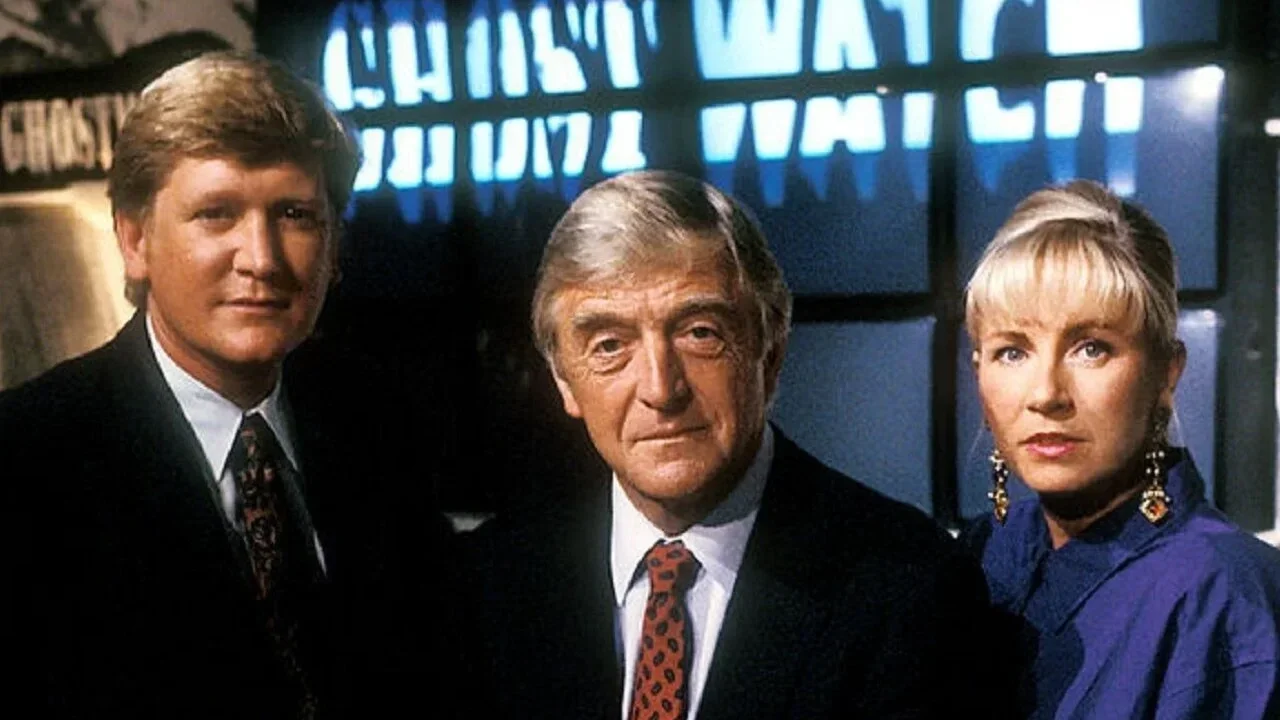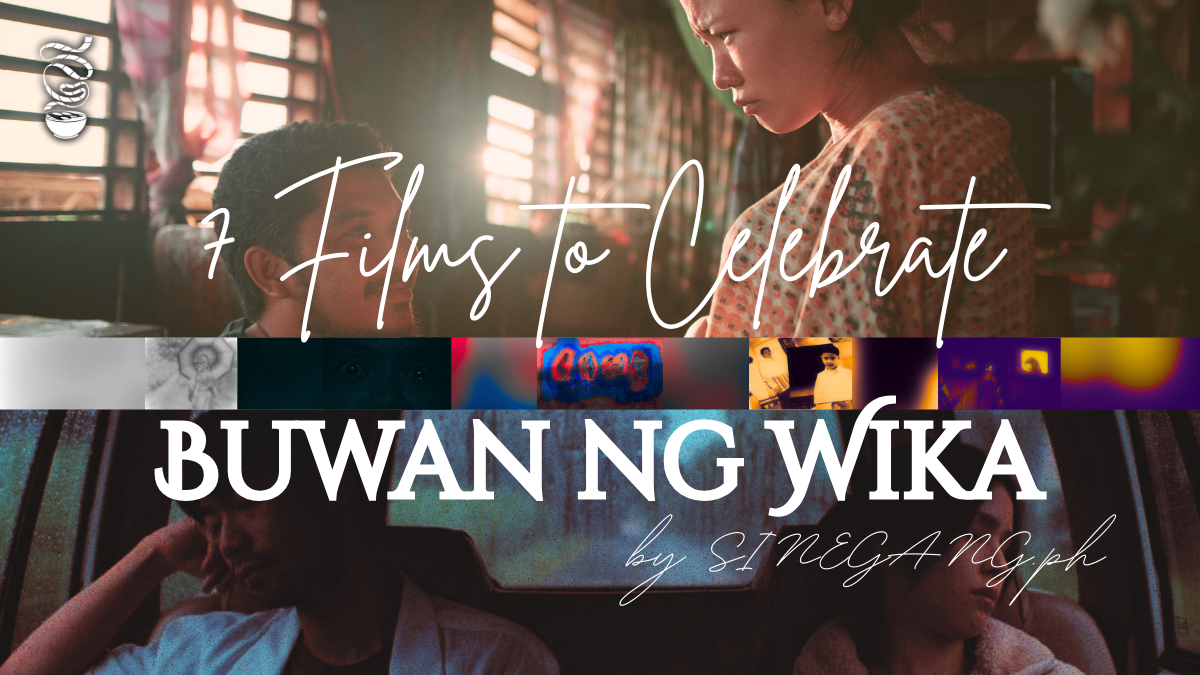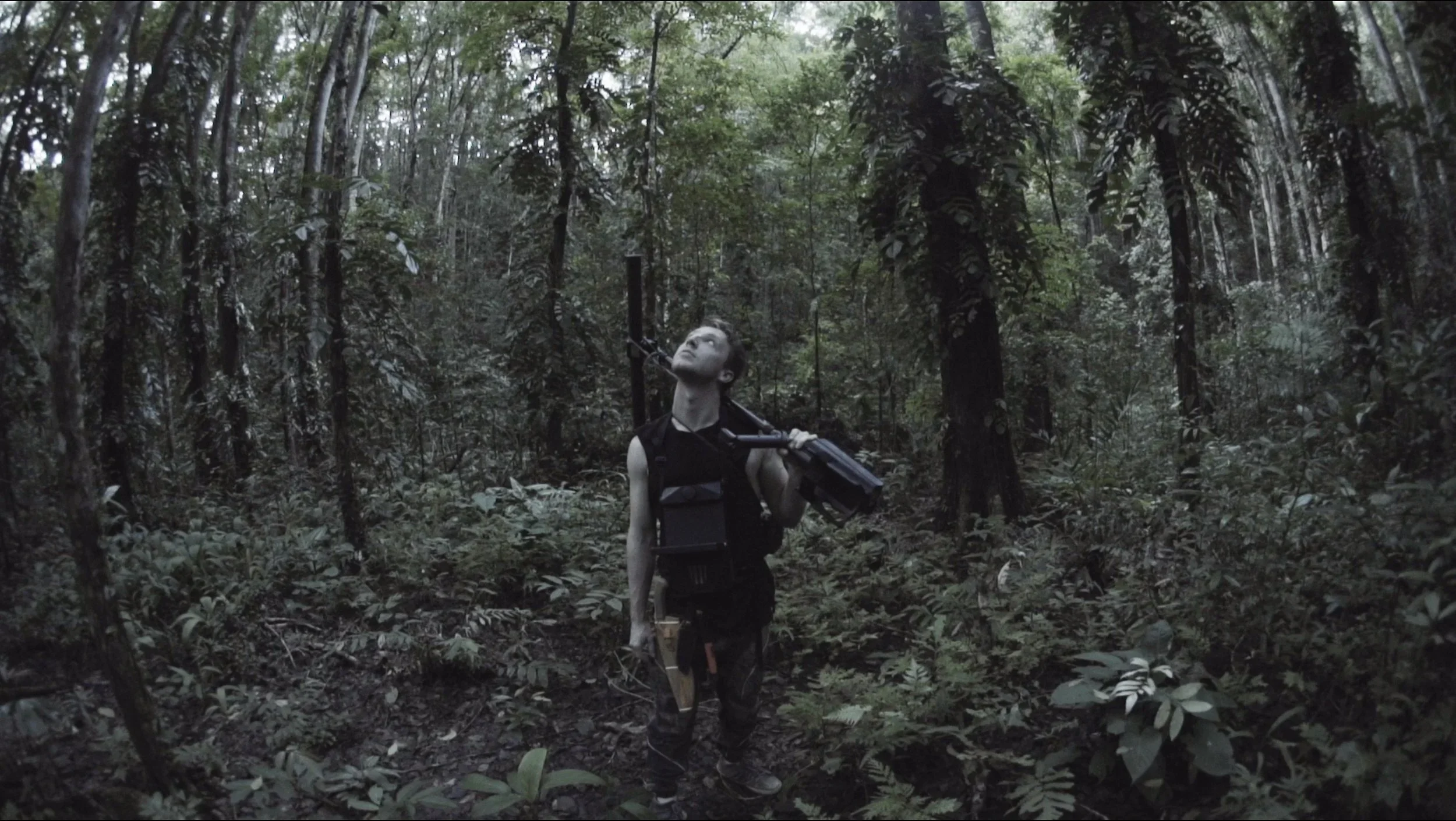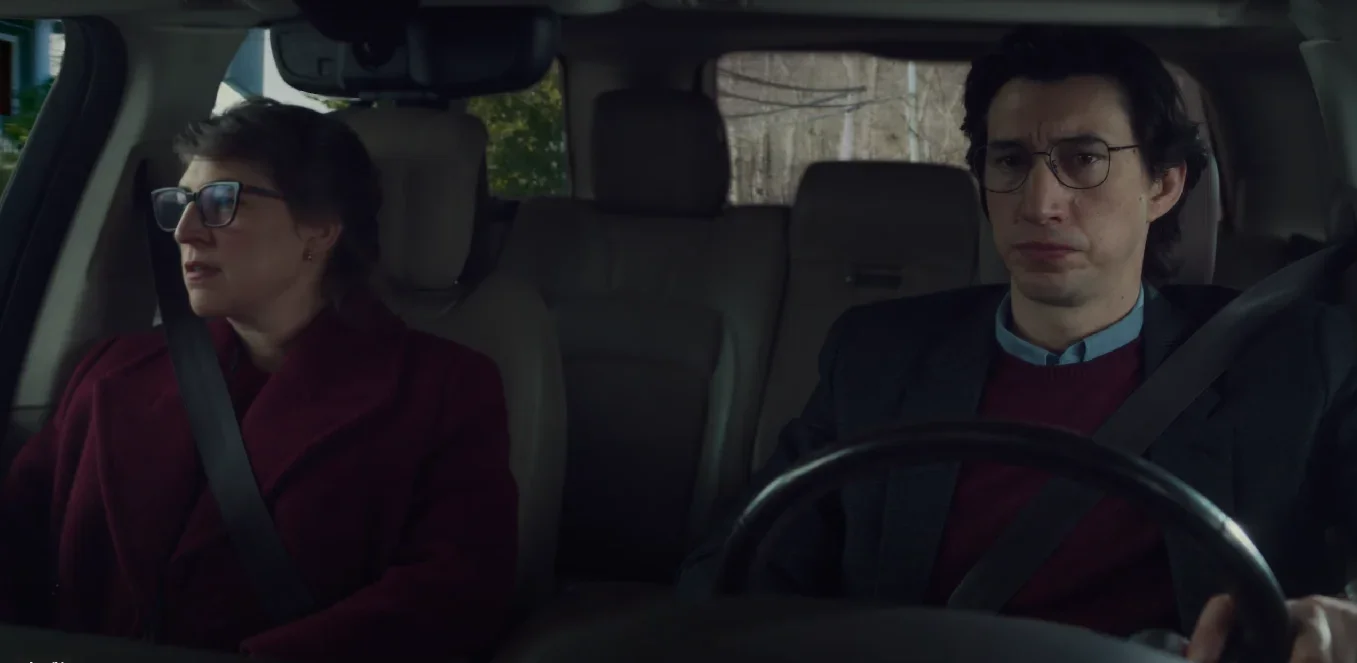Boo! Spooky Movies to Watch this Halloween
Boo! Spooky Movies to Watch this Halloween
Feature art by Ian Cruz
What’s more terrifying than monsters and ghosts? An insurmountable watchlist. Luckily, here at SINEGANG.ph we’ve made things a treat for you by compiling some of our favorite and iconic horror movies. From verifiably chilling classics to frighteningly fun times, this list has everything and more to get you into the spooky spirit of the season. The only question is, are you ready to get scared?
Isabelle Adjani in Possession
Possession (1981)
Dir. Andrzej Żuławski
As someone who’s not incredibly well-versed in all horror films, Possession truly got to me as a teenager with how insane and devastating it was to endure. With the turmoil of divorce subtextually tied to the separation of Poland from the European communist bloc, Possession remains a personal tale of a couple’s separation driving both Anna and Mark to their own points of insanity. And what drives that core darkness of the film are the career-best performances of both Sam Neill and especially Isabelle Adjani. That infamously iconic subway scene where Adjani absolutely breaks down is one that has continually disturbed my mind endlessly. — Ian Cruz
Olwen Kelly in The Autopsy of Jane Doe
The Autopsy of Jane Doe (2016)
Dir. André Øvredal
I’ve never really been into horror movies. I usually avoid them because I don’t like scaring myself over something that isn’t real. But this film surprised me. The Autopsy of Jane Doe made me realize that horror doesn’t have to be just about fear—it can also be about something deeply human. Underneath all the screams and suspense, it shows how people deal with guilt and loss. What starts as a simple autopsy slowly turns into a long, terrifying night that feels both supernatural and psychological. What I love most is how restrained it is. It doesn’t rely on loud jump scares; instead, it builds tension through mystery, atmosphere, and great performances. It’s the kind of fear that stays with you because it feels so real, even when everything around it isn’t. — Uno Arsoler
Mike Smith, Michael Parkinson, and Sarah Greene in Ghostwatch
Ghostwatch (1992)
Dir. Lesley Manning
In a world where social media didn’t exist, a BBC-produced Halloween mockumentary special terrified children and adults alike in the United Kingdom during the early 1990s—not just with its usual scares, but because almost everyone believed the “live” broadcast they were watching was real. Ghostwatch follows a supernatural investigation led by television presenter Michael Parkinson, featuring an interviewer, a reporter, and a camera crew as they explore a supposedly haunted house in Britain—with, of course, terrible consequences. On a side note, I could thank my documentary professor in film school for introducing this to us.
— Ralph Regis
Robert Mitchum in The Night of the Hunter
The Night of the Hunter (1955)
Dir. Charles Laughton
When I picked up this film without watching the trailer or expecting much, it was just another random choice for my 31 Days of Horror marathon a few years back. What I found wasn’t just a film to be consumed, but something that reminded me why I wanted to see films in the first place. I was so transfixed and terrified at the same time by its chiaroscuro visuals reminiscent of German Expressionism and symbolism heavy with Biblical allegory. Robert Mitchum and Lillian Gish give compelling performances with an unyielding presence, turning a simple morality tale into a timeless vision. Part nightmarish bedtime story, part spiritual parable, the film confronts the perpetual struggle between good versus evil, faith and deception that still mirrors the world we live in today. — Dave Jonathan Verbo
(Fun fact: In Do The Right Thing (1989), Spike Lee pays homage to The Night of the Hunter with his version of the iconic “love-hate” scene)
Mariclare Costello in Let’s Scare Jessica to Death
Let’s Scare Jessica to Death (1971)
Dir. John D. Hancock
The title is unlike any other; it seizes you immediately and reels you in for a cruel and daring mission. Who is Jessica and why must we scare her to death? However, upon watching the film, you will find the story seizes you, too. It follows Jessica (Zohra Lampert), fresh off the mental ward, moves to the countryside with her husband and a close friend and subsequently experiences unspeakable terrors that surround her. Reality (usually a distinguishable element within a film) in Let’s Scare Jessica to Death is obfuscated by a cloud of fog and moody atmosphere. The mounting panic and paranoia Jessica feels when encountering strange and mysterious individuals in the country spill over into the audience’s feelings, making us doubt what is real and what is a hallucination, as if we are in her shoes. This underseen yet undoubtedly masterful exercise in dread was inspired by other ghost stories centering protagonists whose perspectives could be seen as unreliable, like Henry James’ Turn of the Screw and Robert Wise’s The Haunting. However, it is singular, unlike any other in the crafting of its signature eldritch ambience, and thus worth a watch for the purposes of enriching oneself this spooky season. — Thandie Aliño
Jessy Mendiola in Salvage
Salvage (2015)
Dir. Sherad Sanchez
Who says Filipino horror films are “baduy”? You probably just haven’t seen enough of them to make a claim like that (to be fair, many Filipino films are hard to access.) Still, here’s one small indie gem from Mindanao that deserves a spot among the scariest Filipino horror films of all time (horror may be subjective — but I stand by this one). Sherad Sanchez’s Salvage is a found footage horror film, a rarity in Philippine cinema, so expect the usual nauseating shaky cam and annoying screeching from the characters. But what makes this film genuinely haunting is how it blends Apichatpong Weerasethakul-esque vision of nature as a spiritual and mystical space, topped with Lynchian WTF surrealism, and the unnerving tension that defines the best of the found footage genre. It experiments with the format in striking ways, like distorting and manipulating video and color until the footage teeters into the psychedelic territory. Set in a military-controlled rural area of Mindanao, Salvage also hints at a political commentary: that evil isn’t some supernatural force, but something living and breathing among us. — Linus Masandag
DJ Walters (voiced by Mitchel Musso), Chowder (voiced by Sam Lerner) and Jenny Bennett (voiced by Spencer Locke) in Monster House
Monster House (2006)
Dir. Gil Kenan
A motion-capture animated horror-comedy film that piqued my attention during a late-night movie marathon on November 1, back when I was in high school, was Monster House, directed by Gil Kenan. I felt immersed in the story, as it captures a youthful sense of adventure through three kids whose warnings that a neighboring house is alive and dangerous are dismissed by the adults around them. With Halloween fast approaching, the trio must find a way to destroy the house before innocent trick-or-treaters fall victim to its wrath. What began as a creepy and eerie experience eventually left me with a deep sense of melancholy. It’s impressive how the film blends thrills, humor, and heartfelt emotions, turning a typical haunted-house tale into a meaningful story that reminds us that even monsters have stories worth understanding. — Bea Allado
A photograph from Savageland
Savageland (2015)
Dir. Phil Guidry, Simon Herbert, David Whelan
Don’t let the amateurish production discourage you. It’s a feature, not a bug. Savageland embraces the rough edges of low-budget, small-town documentaries to chilling effect. A horror mockumentary, it unearths terror not from moving images but from the stillness of photographs, seen through the lens of an immigrant documenting the overnight massacre of a small town. When he is blamed for the atrocity, the film turns its gaze toward a different kind of horror, capturing not only the ghouls that haunt its frames but also the quiet brutality of living as an outsider in a country possessed by xenophobia and racism. Made two years before Trump’s rise, and now, in the shadow of his return, it feels cursed by the truth, its fiction paling beside the horrors of reality. The dead aren’t the only ones haunting America’s borders. — Joe Balinbin
The Dust Devil in the desert
Dust Devil (1992)
Dir. Richard Stanley
Harvey Weinstein ruined many lives and mutilated many films. Richard Stanley’s Dust Devil was one of them. Yet even in its fragmented form, its spirit endures, much like the Faustian cowboy at its center, who feeds on the grief of a god-forsaken land scarred by war. A vision both picturesque and unholy, Dust Devil drifts like a fever dream born of Jodorowsky and Sergio Leone, confronting Namibia’s wounds of colonialism and apartheid in a spellbinding, ethereal, and terrifying fashion. —JB
Lee Byung-hun and Choi Min-sik in I Saw The Devil
I Saw The Devil (2010)
Dir. Kim Jee-woon
I’ve never been easily shaken by horror films—not because I’m fearless, but because few ever truly reach beneath my skin the way they claim to, so when a former friend told me to watch this one, curiosity got the better of me. Kim Jee-won’s horror-thriller film follows a Special Agent driven by revenge after his fiancée’s brutal murder, drawn into a grim chase that blurs the line between justice and obsession. What stayed with me most was how the story slides from something almost redemptive to something cruel, its descent carried by Lee Byung-hun and Choi Min-sik, who ground the film’s exaggerated horror in something raw and human, heavy with grief instead of triumph. Under Kim’s direction, the violence feels too close, too real, and when the film finally ends, the terror doesn’t leave — it lingers, like a thought you can’t quite silence. —Jessica Maureen Gaurano
Audrey Hepburn as Susy Hendrix in Wait Until Dark
Wait Until Dark (1967)
Dir. Terence Young
Starring the late Audrey Hepburn in her role as Susy Hendrix in Wait Until Dark, the blind woman who is constantly deceived and threatened by criminals who try to get something out of her. One good thing it does is it always leaves you on edge, always rooting for Susy’s survival, as seeing her struggle on screen with things she cannot even see in the first place. The heart of the film is Audrey Hepburn’s performance; she inhabits every as the story progresses is a manifestation of the terrors she is about to face, and you can’t help but feel sympathy and be anxious for her. — Christ Dustly Go Tan
The family dinner scene in Kisapmata
Kisapmata (1981)
Dir. Mike de Leon
Never knew that your own family could be your own horror story. What does it feel like to have that every action and everything you have done is always being monitored with predatory eyes and even claimed as his object of possession. Kisapmata does more than scare with the fears and terrors of surveillance, but it also criticizes patriarchal control. What started as a necessary survival has now turned into an excuse to grovel for everything he wants. — CDGT
Paul Meurisse in Diabolique
Diabolique (1955)
Dir. Henri-Georges Clouzot
Diabolique is a film that stands as a true testament to its name. In a series of unforeseen events, Véra Clouzot, the headmaster’s wife, and Simone Signoret, the headmaster’s mistress, conjure a plan to murder the man to whom they share a mutual affinity with. As they grapple with the consequences of their actions, they find themselves in a series of entangled events when rumors start to circulate of the eerie and ominous affairs happening at the school of whom the man that they have killed supervises at—the vain headmaster Paul Meurisse. Based on a 1952 French novel Celle qui n'était plus written by Boileau-Narcejac, Henri-Georges Clouzot’s Diabolique is a French psychological horror, drama, mystery revolving around an abusive headmaster, his acquiescent wife and his mistress gradually unmasking themselves of their true intentions to the audience as each scene of the tale intriguingly unfolds. The film—starting off in a calming manner—anxiously gravitates to the mystery surrounding the corpse, prodding the viewers to ask questions about the headmaster’s supposed mortality, whether he has finally come back from the dead—to find himself justice or to haunt the two women back. — Yve Ventures
Michael Keaton and Winona Ryder in Beetlejuice
Beetlejuice (1988)
Dir. Tim Burton
A film about ghosts who want to get the humans out of their house—and rightfully so! Beetlejuice is Tim Burton’s first film after Pee Wee’s Big Adventure, and the one that cemented his style as a filmmaker and his partnership with Danny Elfman. Not a full horror film, but I’ve always loved how Burton deals with dark themes as something not to be feared but rather embraced. Revisiting it every Halloween, I find that it’s a surprisingly dark tale for something that a lot of us watched as kids. The Maitlands die early on, and Lydia even expresses her desire to be a ghost because she feels like she doesn’t fit in with her family. I love how this movie rewards Lydia’s outcastness instead of punishing her for it. The Underworld in this film is delightfully macabre, and I want so badly to visit it. I think that everyone in the cast is firing on all cylinders, but especially Michael Keaton and Catherine O’Hara who bring such great comedic timing. Comedy and horror have always been intertwined, and you can see it across all of Burton’s filmography. —Gab Aniceto
Still from Occult
Occult (2009)
Dir. Koji Shiraishi
When I first saw Koji Shiraishi's Occult, the first thing that I wrote in my notes was that the film makes the horrific feel normal and the bizarre horrific. A large portion of the movie will have the audiences sit in anticipation, leaving them wondering not only what's going to happen next, but also if there's anything that will happen at all. There's a mystery here about the cosmic, unseen forces at hand, but you're not entirely sure if they're actually real or not. Instead, you follow a character who truly believes they are real, and slowly, people around them start to believe that they are. And that's the most horrifying thing: the idea that people develop unshakable faith in something malevolent and uncaring, behaving as if this is just another day at the office. Even more unsettling is when they begin to think that they've conceived some great purpose that they need to fulfill. The film's final image can make it or break it for some, but I find it to be utterly striking and unforgettably haunting. —Justin Caunan
Still from The Devils
The Devils (1971)
Dir. Ken Russell
(Viewer discretion advised: the film includes graphic and provocative content that challenges religious and moral standards which some may find offensive or distressing)
In The Devils, the notorious provocateur Ken Russell strips every institution down to its barest and ugliest nature, perverting human agency through ideologies powerful enough to turn people’s faith into a glorified commodity, bought with prayers or political allegiances. Its provocations are far from mild; rather, they are deliberately extreme, yet brutally honest in ways most of us rarely admit. Blasphemous imagery here is more than mere spectacle; it is unleashed rage, a liberating indictment of repression, fanaticism, and authoritarian control. Russell’s audacious direction, biting dialogue, cerebral performances, and detailed, often hallucinatory set designs propel the chaos with intensity, delivering an experience that left my sister—my co-horror marathoner—and me speechless by the end: is this truly a 70s film, or has Russell made something entirely timeless and uncontainable? — Joshua Jude Ubalde

































